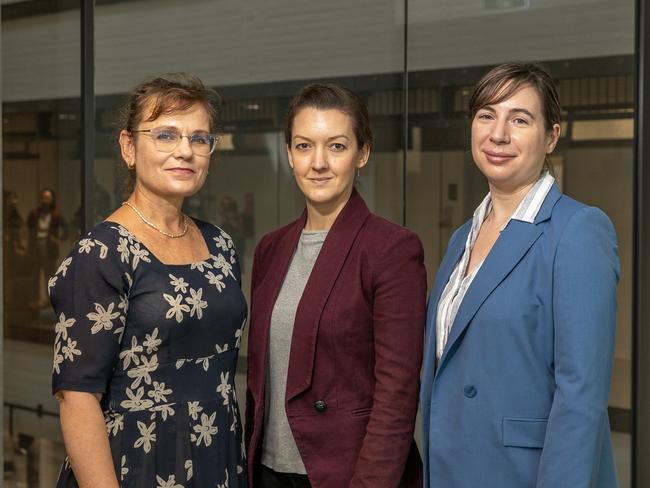Australian scientists create cutting-edge responsive materials
Mix nanoparticles and DNA to create a new class of materials which respond precisely to the environment around them.

Five Australian researchers are at the forefront of a rapidly developing field that draws on many scientific disciplines to build a new class of materials that react to the environment around them.
Three scientists from the University of Sydney, one from the University of Melbourne and one from Swinburne University of Technology have embarked on a research program with five US colleagues to develop the fundamental science around responsive materials.
Shelley Wickham, from the University of Sydney Nano Institute, said the materials were built around a framework of DNA – a molecule chosen because of its acrobatic flexibility and the fact it changes shape in response to chemical or light signals. The technique is sometimes known as “DNA origami”.
Dr Wickham said the team aimed to embed particles with optical or magnetic properties in the DNA scaffolding. Then, when the DNA changes shape – say in response to a chemical trigger or being stimulated with light – the structural pattern of the embedded particles also changes, giving the material different properties.
It could change its colour, it could change the way it catalyses chemical reactions, it could change its magnetic properties, or it could change its mechanical properties, for example becoming stronger. Such materials might be able to store information in response to a stimulus or act as a tiny sensor, sending a signal in response to a stimulus.
To give a practical example, these responsive molecules might be able to function as tiny robots, delivering drugs precisely to a site in the body.
The project explores these ideas and is likely to lead to applications for the responsive materials once they can be reliably made.
“This project is about the fundamental science to make that happen,” Dr Wickham said.

Her specialty in the project is the DNA scaffolding which, she said, was artificially synthesised, not extracted from living cells.
Two colleagues at Sydney Nano also work on the project, Anna Waterhouse will use light microscopes to watch the new materials as they transform, and Marcela Bilek will create functional scaffolds to enable the larger scale growth of the materials up to centimetres in size. Also part of the project are Amanda Ellis at the University of Melbourne, who is working to incorporate polymer materials into the system, and Peter Kingshott at Swinburne University of Technology, who is developing new ways of binding the DNA to nanoparticles.
One feature of the project is the many scientific disciplines on which it draws. “We have people from so many different disciplines – material science, nanotechnology, chemistry, physics, medical science and engineering,” Dr Wickham said.
The project is being led from the US. Project leader Oleg Gang, from Columbia University, said it was an “incredibly collaborative effort with partners from the US and Australia who have broad expertise in experimental and computational materials science and nanotechnology”.
“ We’re confident that bringing together traditionally separated fields and unexplored ideas will result in some truly transformative concepts,” Professor Gang said.
The project has total funding of $12.6m, with $3m coming from the Australia-US International Multidisciplinary University Research Initiative, or AUSMURI, a joint program of the US Department of Defence and the Australian Department of Defence that supports public domain fundamental multidisciplinary science.




To join the conversation, please log in. Don't have an account? Register
Join the conversation, you are commenting as Logout